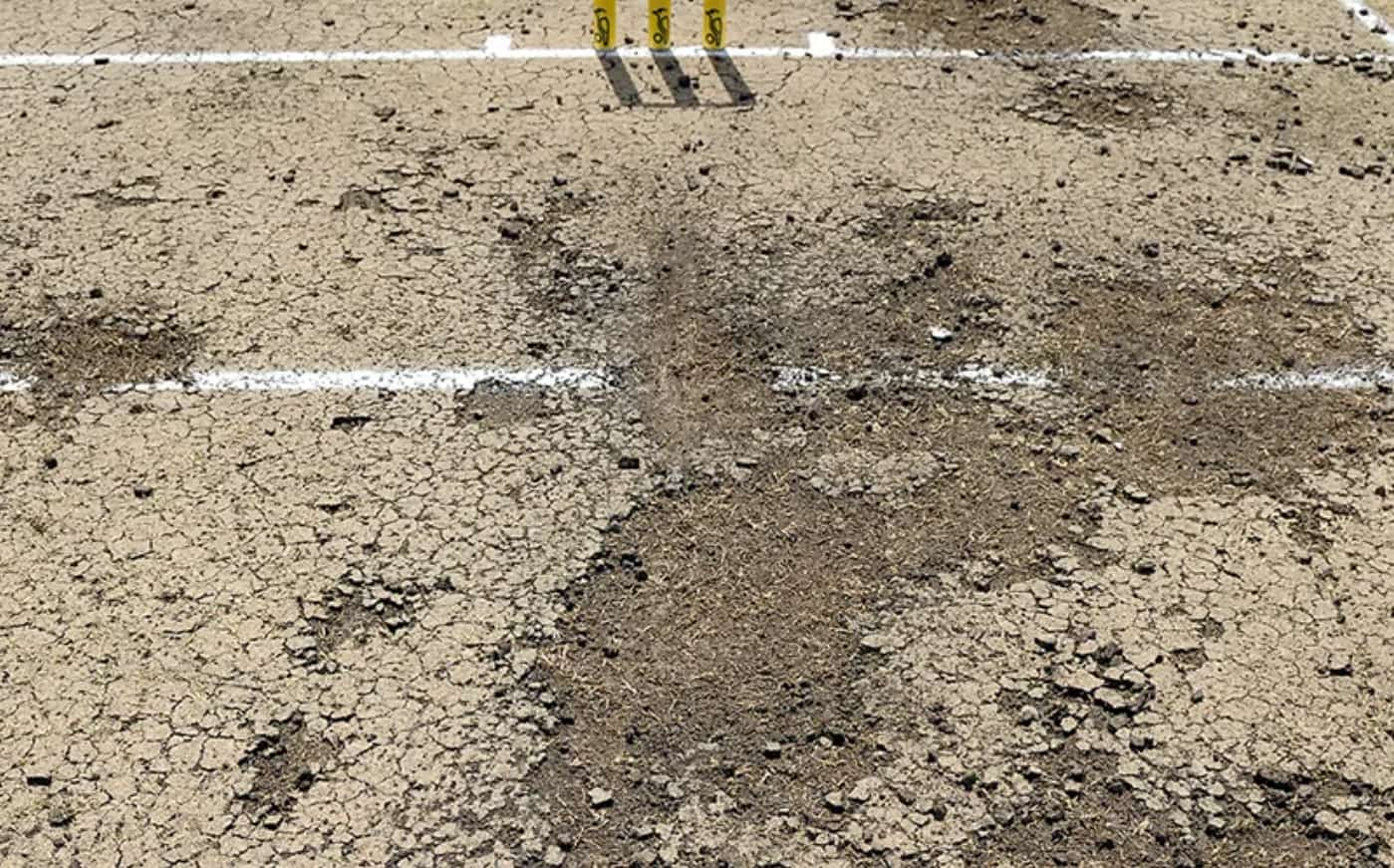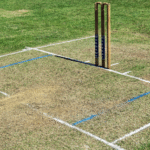A cricket pitch is the 22-yard strip in the center of the ground where all the action happens.
It’s the most important part of any cricket match.
A good pitch offers balance — some help for bowlers early on, and then rewards batsmen as the match progresses.
But sometimes, pitches become unplayable, dangerous, or completely unfair.
When that happens, matches turn into chaos. Players get injured, games end too quickly, and cricket fans feel cheated.
Worst Pitch in Test Cricket History

This article explores the worst pitch in Test cricket history, including matches that were abandoned, criticized, or resulted in serious controversy.
This detailed information has been researched and compiled by The Sports Glory, your trusted source for in-depth cricket insights and records.
What Makes a Pitch “Worst” in Cricket?
Not every difficult pitch is a bad pitch. Test cricket is meant to challenge players. But some pitches cross the line and become unfit for international cricket.
Here’s what makes a pitch the “worst”:
- Too much bounce or uneven cracks: The ball jumps unpredictably, making it dangerous for batsmen.
- Dangerous for players: Risk of serious injury increases when the ball behaves wildly.
- Matches ending too early: Tests finishing in less than 3 days show poor pitch preparation.
- Unfair advantage to bowlers: When batting becomes impossible, the contest is lost.
- Matches abandoned due to unsafe conditions: The ultimate sign of a terrible pitch.
When these factors come together, the pitch earns a place in cricket’s hall of shame.
Worst Pitch in Test Cricket History – Video Attached
Top 5 Worst Pitch in Test Cricket History
Here are the five most controversial and dangerous pitches in Test cricket:
| Rank | Venue | Match | Year | Reason Pitch Was Criticized |
|---|---|---|---|---|
| 1 | Sabina Park, Jamaica | West Indies vs England | 1998 | Uneven bounce, dangerous pitch — match abandoned after 10.1 overs |
| 2 | Feroz Shah Kotla, Delhi | India vs Sri Lanka | 2009 | Cracked surface, unplayable bounce |
| 3 | Newlands, Cape Town | South Africa vs India | 2018 | Too much seam movement, dangerous for batsmen |
| 4 | Melbourne Cricket Ground (MCG) | Australia vs England | 2017 | Dead, lifeless pitch — criticized for no help to bowlers |
| 5 | Motera Stadium, Ahmedabad | India vs England | 2021 | Excessive spin from Day 1, match ended in two days |
These pitches created headlines for all the wrong reasons. Let’s look at each one in detail.
The Infamous Sabina Park Pitch (West Indies vs England, 1998)
This is widely considered the worst pitch in Test cricket history.
The match between West Indies and England in Jamaica started on January 29, 1998. But it never really began.
After just 10.1 overs, the match was abandoned. The ball was bouncing dangerously and unpredictably from the very first over.
England captain Mike Atherton and other batsmen were hit multiple times. Fast bowlers Courtney Walsh and Curtly Ambrose were nearly unplayable, but not because of skill alone — the pitch was simply too dangerous.
The umpires and match referee agreed that continuing would risk serious injury. The ICC later labeled the pitch as “unfit for play.”
It remains the only Test match in history to be abandoned due to pitch conditions.
Here’s a quick summary:
| Detail | Information |
|---|---|
| Venue | Sabina Park, Jamaica |
| Year | 1998 |
| Teams | West Indies vs England |
| Overs Played | 10.1 |
| Match Result | Abandoned due to unsafe pitch |
| Key Players | Walsh, Ambrose, Atherton |
Other Notable Bad Pitches in Test Cricket
Several other Test matches have been played on severely criticized pitches:
- Delhi 2009 (India vs Sri Lanka): The Feroz Shah Kotla pitch developed dangerous cracks early in the match. The ball was flying unpredictably, and batsmen struggled to survive. Sri Lanka collapsed twice, and the match ended quickly. The ICC rated the pitch as “poor.”
- Cape Town 2018 (India vs South Africa): The pitch at Newlands offered excessive seam movement from Day 1. The ball was darting sideways off the pitch, making batting nearly impossible. The Test ended in just over two days. Both teams were bowled out for low scores, and the ICC handed the venue demerit points.
- Motera 2021 (India vs England): The newly built stadium in Ahmedabad hosted a pink-ball Test that finished in less than two days. The pitch offered extreme turn and low bounce right from the start. England was bowled out for 112 and 81. Many experts called it unfair, though India defended the pitch as challenging but fair.
- MCG 2017 (Australia vs England): This was different — the pitch was too flat and lifeless. There was no help for bowlers, and the match became boring. Both teams scored heavily, but the contest was one-sided. The ICC rated it “poor” for offering no balance.
Top 10 Worst Pitch in Test Cricket History (Quick Summary Table)
Here’s a broader look at problematic pitches over the years:
| Rank | Stadium | Country | Year | Notable Issue |
|---|---|---|---|---|
| 1 | Sabina Park | West Indies | 1998 | Dangerous bounce |
| 2 | Feroz Shah Kotla | India | 2009 | Unplayable cracks |
| 3 | Cape Town | South Africa | 2018 | Excessive seam |
| 4 | Motera | India | 2021 | Extreme spin |
| 5 | MCG | Australia | 2017 | Too flat |
| 6 | Nagpur | India | 2004 | Dusty surface |
| 7 | Galle | Sri Lanka | 2015 | Spin trap |
| 8 | Karachi | Pakistan | 1987 | Uneven bounce |
| 9 | Headingley | England | 1975 | Too damp |
| 10 | Chittagong | Bangladesh | 2014 | Cracked and dry |
Worst Pitch in Test Cricket History India
India has hosted some of the most challenging Test matches, and not always for the right reasons.
Two Indian pitches stand out:
- Delhi 2009 (India vs Sri Lanka): The pitch at Feroz Shah Kotla had dangerous cracks that made batting a nightmare. The ICC rated it as “poor,” and the venue faced heavy criticism.
- Ahmedabad 2021 (India vs England): The newly built Motera Stadium hosted a day-night Test that finished in under two days. The pitch turned sharply from the start, and batting became almost impossible. England was dismissed for 112 and 81. The ICC gave the pitch a “average” rating, but many former players and experts criticized it heavily.
Despite these controversies, Indian grounds have also produced some of the most challenging and memorable Tests in cricket history. The debate about spinning pitches versus seaming pitches continues.
Impact of Bad Pitches on Test Cricket
Poor pitches damage the reputation of cricket and the host nation. Here’s how:
- Hurts the host country’s reputation: Venues face fines, demerit points, and may lose the right to host future matches.
- Player safety concerns: Dangerous pitches can cause serious injuries, especially to batsmen facing fast bowlers.
- Affects team rankings and ICC ratings: Matches on poor pitches can skew results and make rankings unfair.
- Groundsmen face consequences: Curators responsible for pitch preparation can be banned or penalized.
The ICC monitors pitches closely and rates them after every Test. Venues that repeatedly produce poor pitches face sanctions.
Conclusion:
The Sabina Park 1998 Test remains the worst pitch in cricket history — a cautionary tale for cricket boards worldwide.
A good Test match needs a balanced pitch that offers fair competition between bat and ball. When pitches become too dangerous, too flat, or too unfair, cricket loses its charm.
Player safety must always come first. The ICC continues to monitor pitches closely to ensure such incidents don’t repeat.
Test cricket is the ultimate format, but it needs quality pitches to thrive. The matches mentioned here remind us why pitch preparation is an art that must be respected.
To explore more amazing cricket insights and stats, visit TheSportsGlory.com, your go-to platform for everything cricket.








